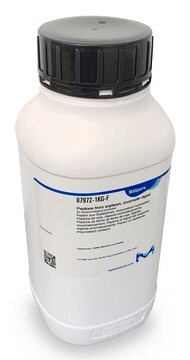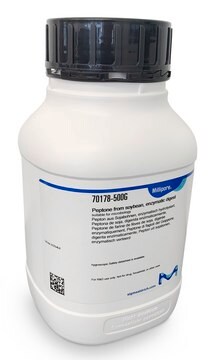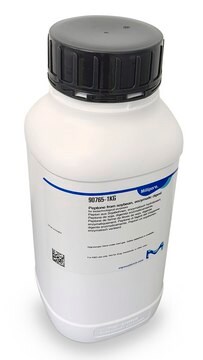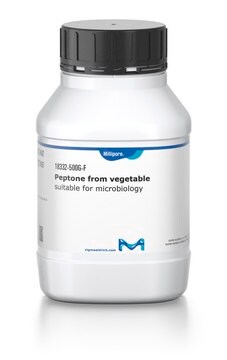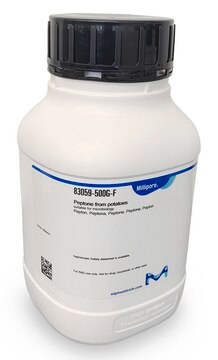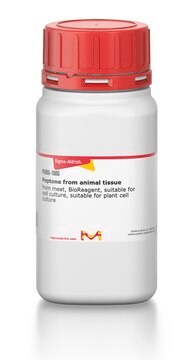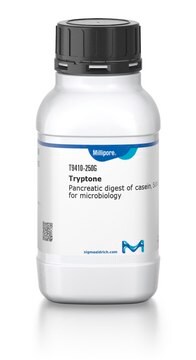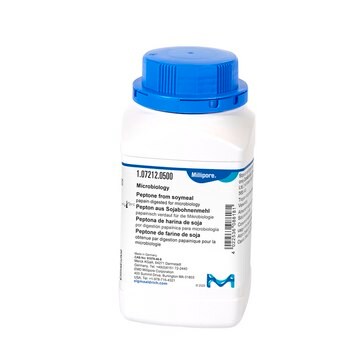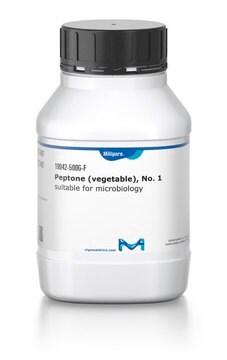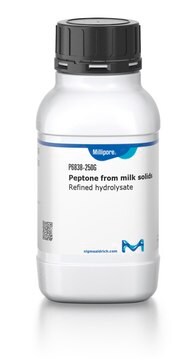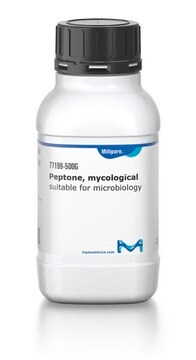P0521
Peptone from Glycine max (soybean)
Type IV, powder, Component of microbiological growth media
Synonym(s):
Protein from soybean, Soya peptone type IV
About This Item
Recommended Products
biological source
Glycine max (soybean)
Quality Level
sterility
non-sterile
type
Type IV
form
powder
nitrogen analysis
~2.0% amino, ~8.0% total
application(s)
food and beverages
microbiology
vitamins, nutraceuticals, and natural products
storage temp.
10-30°C
Related Categories
General description
Application
Peptone from Glycine max as a nutrient, displays comparative or better growth features of cultivated microorganisms than peptone from other sources
Storage Class Code
11 - Combustible Solids
WGK
WGK 1
Flash Point(F)
Not applicable
Flash Point(C)
Not applicable
Personal Protective Equipment
Regulatory Listings
Regulatory Listings are mainly provided for chemical products. Only limited information can be provided here for non-chemical products. No entry means none of the components are listed. It is the user’s obligation to ensure the safe and legal use of the product.
JAN Code
P0521-VAR:
P0521-100G:
P0521-500G:
P0521-50KG:
P0521-BULK:
P0521-1KG:
Choose from one of the most recent versions:
Already Own This Product?
Find documentation for the products that you have recently purchased in the Document Library.
Customers Also Viewed
Our team of scientists has experience in all areas of research including Life Science, Material Science, Chemical Synthesis, Chromatography, Analytical and many others.
Contact Technical Service